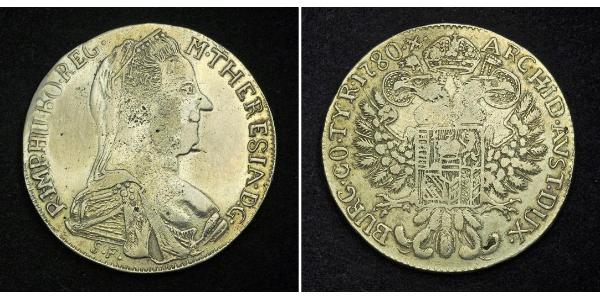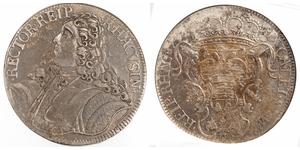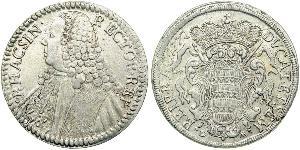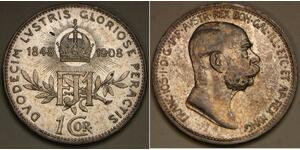(售价 $81.0)
1780, Maria Theresa. Silver Thaler Coin. Stunning African Re-Strke Variation!
Denomination: Silver Thaler
Mint Place: Uncertain (somewhere in Africa)
Reference: Leypold T2 var., Hafner -, KM-. Rare!
Mint Year: dated 1780 (probably struck during the last 20 year imitating the Italian Period MTT Restrikes!)
Condition: Once used as a brooch, tooled (polished) obverse fields, where the pin was removed, otherwise a nice VF+
Weight: 27.54gm
Diameter: 40mm
Material: Silver
Obverse: Crude bust of Maria theresia right, large mint master´s initals initials below. Round brooch with seven pearls!
Legend: M . THERESIA . D . G . R . IMP . HU BO . REG . / S.F.
Reverse: Crown above double headed imperial eagle, large multiple coat of arms with three crowns and lion.
Legend: ARCHID . AVST . DUX . BURG . CO . TYR . 1780 . X .
For your consideration a very unusual late re-strike interpretation of the famous Maria Theresa Thaler, probably struck in Africa during the last 50 years imitating the italian period restrikes (1814-1848). This specimen is of great collectable value for people who are interested in the various types of Maria Theresa Thaler restrikes. In spite of its crudeness this specimen has all the features of its European counterparts (not a single letter is missing!). A stunning and unusual variety and a great addition!
Bid with confiedence!
Maria Theresa (German: Maria Theresia, see also other languages; May 13, 1717 – November 29, 1780) was a reigning Archduchess of Austria, a Queen of Hungary and Bohemia, and a Holy Roman Empress.
Maria Theresa was the oldest daughter of Elisabeth Christine of Brunswick-Wolfenbüttel and Emperor Charles VI, who promulgated the Pragmatic Sanction to allow her to succeed to the Habsburg monarchy. Opposition to her acceding to the throne led to the War of the Austrian Succession in 1740. After Emperor Charles VII, who claimed the throne, died in 1745, Maria Theresa obtained the imperial crown for her husband, Francis I. Though she was technically empress consort, Maria Theresa was the de facto ruler of the nation, and she began styling herself Holy Roman Empress in 1745. Maria Theresa had in fact already begun her rule in 1740 during the Austrian War of Succession.
Maria Theresa helped initiate financial and educational reforms, promoted commerce and the development of agriculture, and reorganized the army, all of which strengthened Austria's resources. Continued conflict with the Kingdom of Prussia led to the Seven Years' War and later to the War of the Bavarian Succession. She became dowager empress after the death of Francis and ascession of her son Joseph as emperor in 1765. Maria Theresa criticized many of Joseph's actions but agreed to the First Partition of Poland (1772). A key figure in the power politics of 18th century Europe, Maria Theresa brought unity to the Habsburg Monarchy and was considered one of its most capable rulers. Her 16 children also included Marie Antoinette, queen consort of France, and Leopold II, Holy Roman Emperor.
1 Corona 奥匈帝国 (1867 - 1918) 銀 弗朗茨·约瑟夫一世 (1830 - 1916)
本组有 25 钱币 / 17 售价
⇑
















-300-150-AeIKqUpY7NEAAAFhroEy54Nz.jpg)







